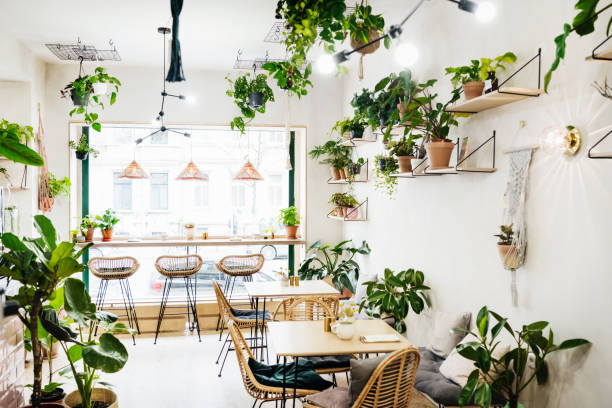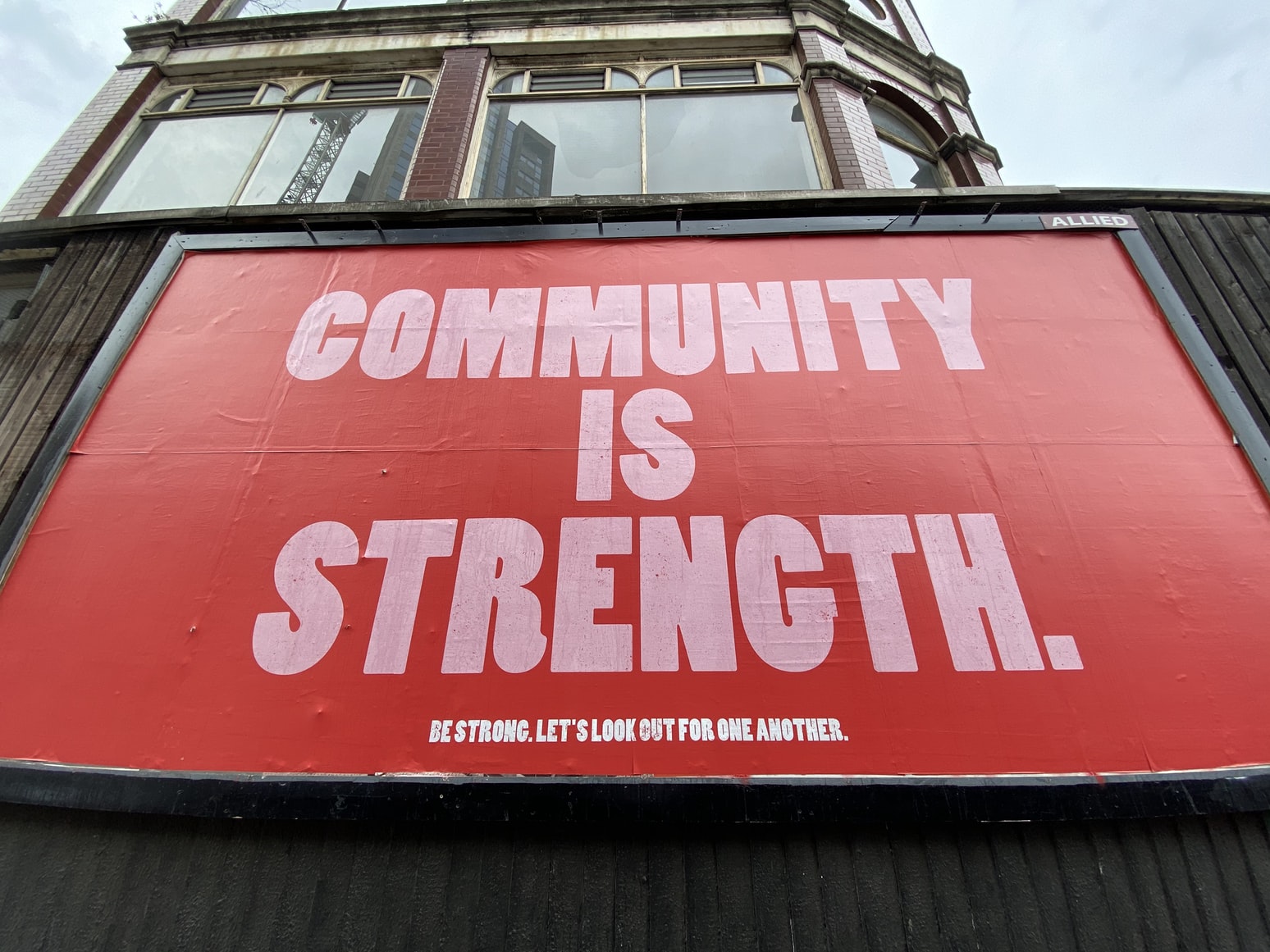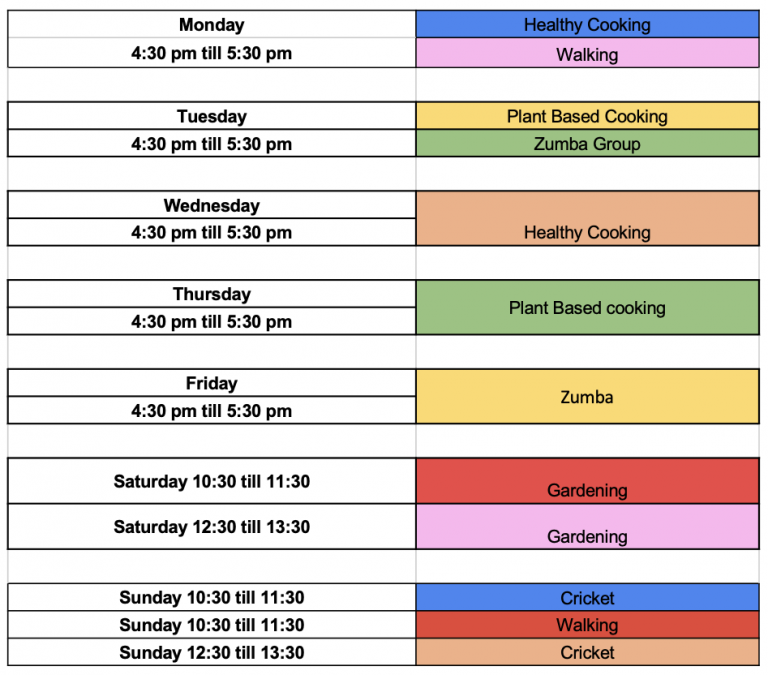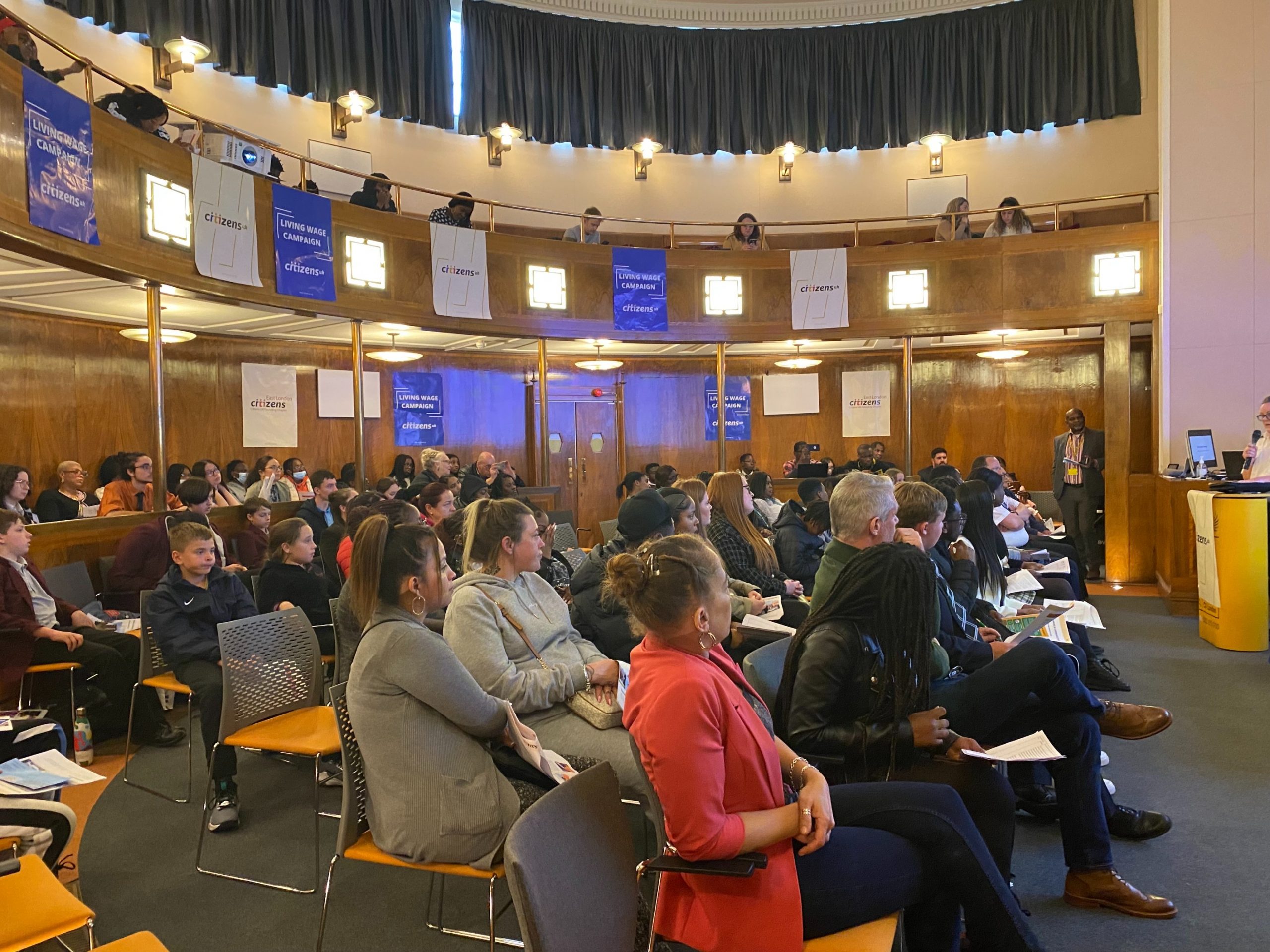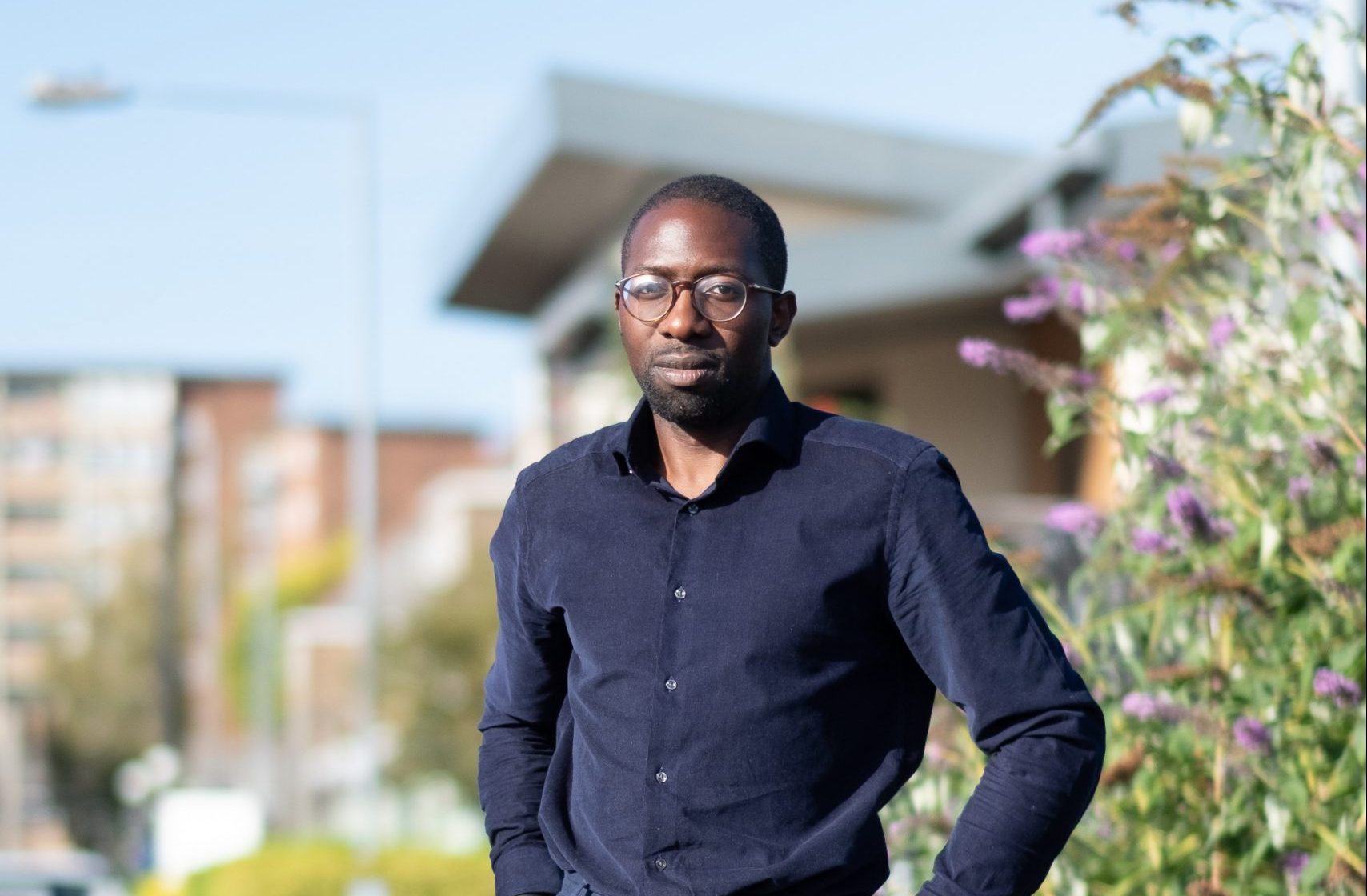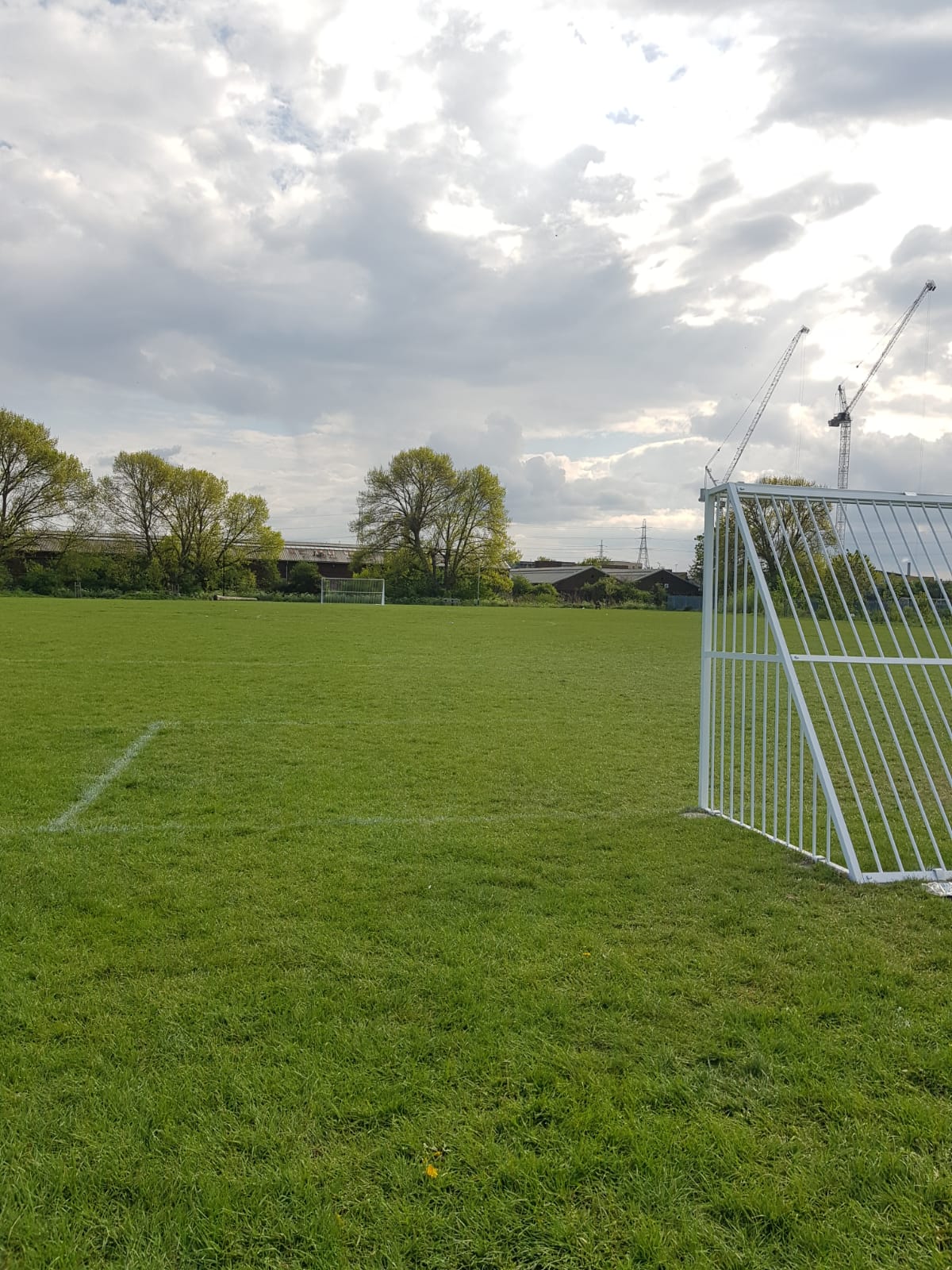We were chatting at the corner of Thames View fields and the pathway to Thames Road. About thirty of us, one sunny Friday in March this year. It is a regular thing we do, walking from the Big Shops on Farr Avenue to the banks of the Thames, by the developers’ prefab offices. We walk and talk. We look around, absorb it all, open ourselves up to the overload. Stepping across the landscape of housing, roads, warehouses, schools, more housing, more roads, buses, vans and lorries. Walking, talking amidst the hum of wider movement on building sites and lives being lived.
It is not just a social. We are researching. Asking what kind of spaces people wanted in the area. All the building going on, housing units by the thousands, but yeah, what kind of spaces would you like for your community? Answer: cosy, warm spaces. Someone said it just like that and everyone immediately agreed. That was exactly it. The craving for togetherness, for spaces we can call our own.
We’ve got a few community spaces but how are they working out? Are they places people want to go to? The group spoke about yesteryear, about the cinemas Barking used to have. About the fields and horses before the development. Each person taking turns spontaneously sharing memories. All the while the cranes on the skyline marked out remorseless inevitable changes.
The arrival of 50,000 new homes in the borough, many of them in Thames View and Riverside, is impossible to really process, outside of the town hall or the top floors of Maritime House, Barking, home of Be First. How can you make sense of it? You can’t. The walk we did, makes sense in a different way, via the senses and feelings evoked. Looking at the pressures on existing spaces, the busy roads, the construction, people reflect on what they want and conclude: cosy, warm spaces.
Another way of saying it is, people want an experience of community, not of estrangement. Places of their own, where they get a say. Cosy, warm spaces. I love that, so simple. So clear, because only residents can truly get to decide what is and isn’t cosy and warm.
I’ve been walking around Thames Ward, now Barking Riverside and Thames View Wards with groups of people, residents, visitors. Just walking and talking. Typically, I get to the end of a long week and get a Friday feeling, especially when the sun is out, of needing to decompress. When people ask me about the area, there’s so much to say, too much for soundbites. It needs to be experienced, absorb the changes that are underway – the HGVs, the people pouring in and out of schools, the warehouses and businesses, the ever-present building sites, pylons.
If you do our walk you will end up by the river, the much-referenced riverside or view of Thames View, but you’ll have to dedicate a couple of hours for that, as we always start at Bastable because that way people get to experience the old and the new. The phase one housing units of Riverside rise like small teeth on the skyline from across the Thames View fields – the locals call it toytown. Different from the typically more spacious Thames View housing that was built on rafts because of the marshy nature of the area, so marshy that even now, mosquitos predominate over the summer and netting is required for many newer residents.
There’s a new Amazon on Thames Road, a Lithuanian beer company, cake shops, so many businesses clustered in one place. Ripple Nature Reserve spanning the bottom end, with entrances padlocked so more recent visitors have never experienced the unique ten-hectare site, once a dumping ground for pulverised fuel ash, now a mixture of woodland, scrub and grassland. We usually access Riverside via Crossness Road because you can see the exact point where Barking Riverside begins, a private estate. One side of the road is in disrepair, the other considerably neater and tidy, the side where resident’s pay council tax and a service charge. Then the housing units with wooden cladding begins. We see small ponds with ducks and approach De Pass Gardens, site of the Barking Fire in 2019, where the cladding on that building has thankfully now been removed, if not yet elsewhere.
The Rivergate Centre marks another stop-off point, a multi faith centre with a Christian Cross on the outside. Where Friday prayers takes place in corridors. A co-op alone in one corner providing much needed supplies for those that can’t reach larger supermarkets the other side of the A13. There’s still a way to go to reach the river, another busy road to cross (River Road / Renwick Road), but once joining Fielders Crescent, there is a short footpath from the road to the river and the view of the Thames spreads out for miles, past Dagenham and into Essex. From the roar of roads and density of housing everything opens up – big sky, river sweeping out to the sea.
The end of the walk marks another special place – often quite windy rather than warm and cosy – but nonetheless uplifting. Once again people want to stand and talk about what it evokes. No longer a rat run to rush through but a place of solace to share and hold close. When urban planners talk about assets and place shaping this I know – it needs to be warm and cosy, and it needs to inspire a sense of awe.
Change is the one constant in our lives. Nothing stays the same. Nothing lasts forever. Change refreshes and reinvigorates but can also leave people feeling unanchored, lacking roots. The property pages of the Evening Standard that I read on the way back from the walk tells me every housing development is the best there has ever been. From nine elms in Battersea, Greenwich Peninsula, Silvertown, Royal Docks. Every corner of London in fact. Every square inch monetised. Money for advertising that props up free newspapers. Money that underpins planning decisions – they call it market viability. Money like change is double-edged. You can have too much or not enough. Money gives you control but it rarely creates warm, cosy spaces for all. For that to happen, we need communities to come to the party. The more community, the cosier it can be. The newspaper ads talked the talk; I wish they’d joined us, they could have walked the walk as well.
Matthew Scott
TWCP Director


